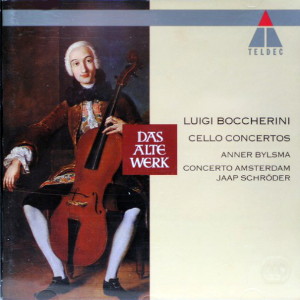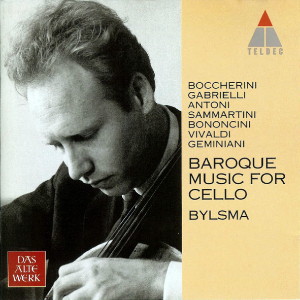  |
The
characteristic
sound of
Boccherini's
music, his
inexhaustibly
flowing
melodiousness,
almost voluptuous
but at the same
time disciplined
by supreme
elegance and
entirely "courtly"
formality, his
unusual harmonies,
with their
tendency towards
sudden colourful
swerves and
changes into the
minor, his
unproblematic and
elegant formal
skill, all mould
the G major cello
concerto into a
work clearly
recognisable by
its scoring
(string orchestra
without wind) as
typically
pre-classical. The
work was
presumably written
during
Boccherini's time
in Spain, and
hence for his own
use, in his post
as chamber
composer to the
Infante Don Luis
(1769-85); it
therefore belongs
to perhaps the
most happy and
untroubled time of
his career, at
first so rich in
fame, and at the
end of his life so
darkened by sorrow
and dire distress.
An 18th century
copy of the Sonata
in B flat major by
Luigi Boccherini,
lost to us for
many years,
recently turned up
in a London
second-hand
bookshop. In its
first and last
movements this
sonata to some
degree calls to
mind the Concerto
in B flat major,
of which,
unfortunately,
there is no
autograph either.
The Ricercata by
G. B. degli Antoni
and the Canon by
D. Gabrielli are
among the earliest
known works for
violoncello. Both
composers were
members of the
Accademia
Filarmonica in
Bologna, an
important centre
for instrumental
music in the 17th
century, where
Archangelo
Corelli, too,
received his
musical education.
The Ricercata by
degli Antoni is
contained in an
edition of 1687;
Gabrielli's Canon
for two
Violoncelli - a
unique item in
compositions for
the cello - is
taken from an
autograph dated
15th January 1689,
now to be found in
the Biblioteca
Estense in Modena.
Gabrielli, whose
nickname was
Domenico of the
violoncello, was
in fact one of the
first masters of
the cello.
There is nothing
at all "primitive"
about this early
music for cello.
The Ricercata
"sopra un sogetto"
had become an
accepted form
since
Frescobaldi's time
and the implied
"polyphony"
contained in a
single melody,
later to be so
wonderfully
developed by J. S.
Bach, had long
been practised in
lute and gamba
music.
|

